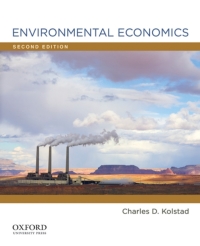Using the data in Problem 1, suppose at air quality level 5, Felix chooses to buy four
Question:
Using the data in Problem 1, suppose at air quality level 5, Felix chooses to buy four bars of soap when they are priced at \(\$ 1\) per bar. Now air quality rises to 10 . How much money would we need to take from Felix to keep his utility constant? (Hint: ignore expenditures on all goods except soap.)
Data from Problem 1
Anna was interested in Felix's preferences regarding air quality in Santiago. She reasoned that since air pollution could be washed off with soap, Felix should view air quality \((A)\) and soap \((S)\) as substitutes. Air quality is measured by an index, with larger values corresponding to higher quality. Holding annual soap consumption at five bars, she asked Felix to picture his utility with air quality at three different levels: 2,4 , and 5 . Call these initial situations 1,2 , and 3 , yielding utility \(U_{1}, U_{2}\), and \(U_{3}\). At each of these levels of air quality, she tried varying the amount of soap, asking how air quality should change to keep utility constant. During this mental experiment, she asked Felix to imagine his consumption of all other goods was fixed. She obtained the following data, showing values of \(A\) to keep utility constant at the three initial levels \(\left(U_{1}, U_{2}, U_{3}\right)\).

Plot the three indifferences curves for soap and air quality implied by these data.
Step by Step Answer:





